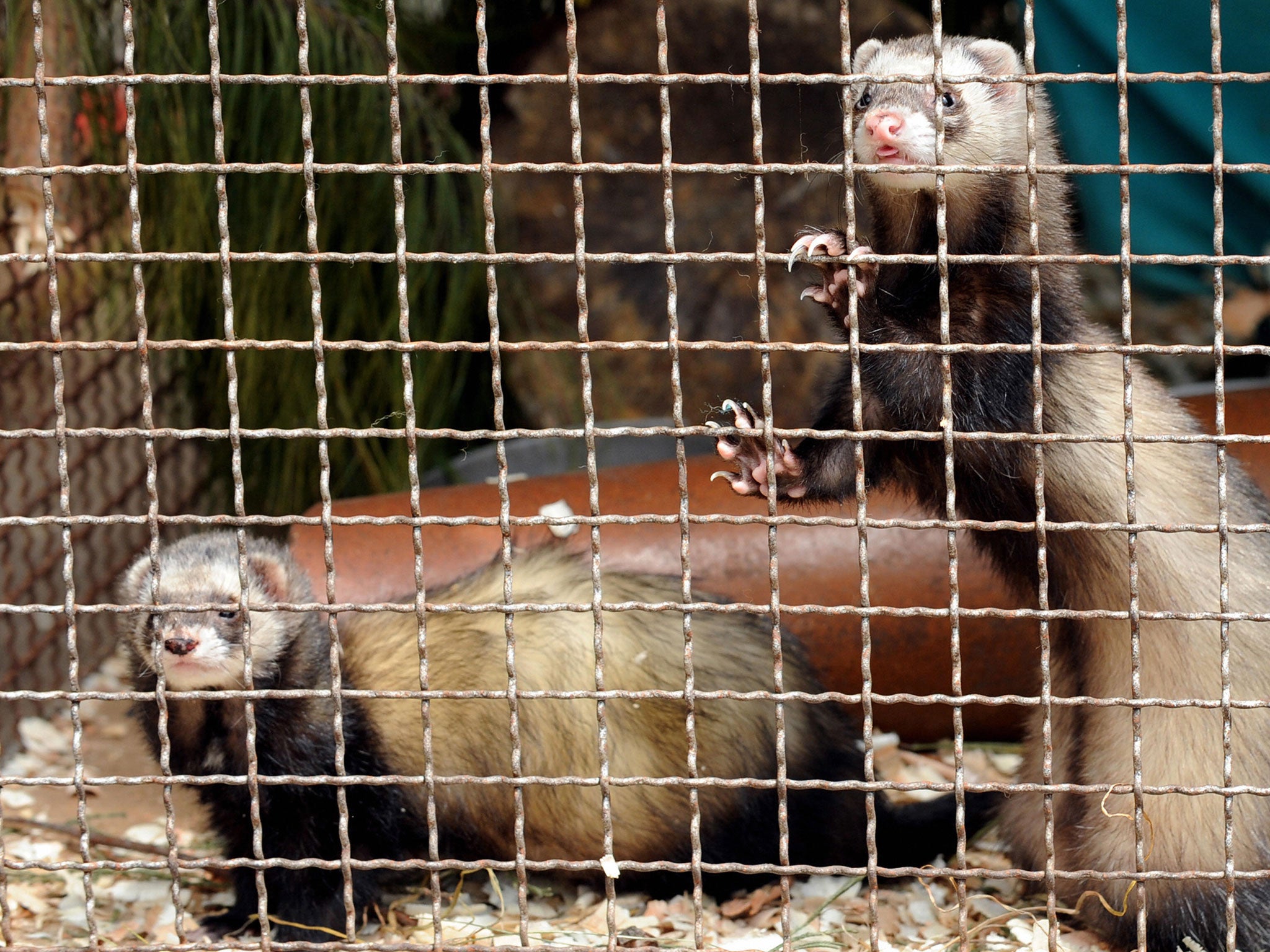'Untrue statements' anger over work to make H5N1 bird-flu virus MORE dangerous to humans
Coalition of leading scientists claim ferret experiments could lead to a pandemic

Some of the world's most eminent scientists have severely criticised the arguments used by some influenza researchers who are trying to make the H5N1 bird-flu virus more dangerous to humans by repeatedly infecting laboratory ferrets.
More than 50 senior scientists from 14 countries, including three Nobel laureates and several fellows of the Royal Society, have written to the European Commission denouncing claims that the ferret experiments are necessary for the development of new flu vaccines and anti-viral drugs.
They also said it is "untrue" to state that the new mutations in the laboratory strain of H5N1, which have enabled the bird-flu virus to be airborne transmissible between ferrets and, potentially, people, have already been seen in nature.
The letter signed by 56 eminent scientists, many of whom are national science academicians, was designed to correct "misstatements" made by the president of the European Society of Virology, Professor Giorgio Palu, who they claim made "incorrect" assertions about the need to carry out the research in an earlier letter he had sent to the Commission.
The ferret research is being carried out by Ron Fouchier and colleagues at the Erasmus Medical Centre in Rotterdam. He has been involved in a legal dispute with the Dutch government which has insisted that he needs an export licence before his H5N1 work is published in a scientific journal.
The Dutch government claimed that the work to study the mutations needed to make H5N1 airborne transmissible between ferrets or people has a possible dual civil-military function and could be misused by bioterrorists. Meanwhile, Dr Fouchier has argued that an export licence hampers his academic freedom to publish the results of his experiments in the open scientific literature.
Professor Palu wrote to the president of the European Commission in October to lobby for a change to the EU regulations covering export licences on behalf of Dr Fouchier, arguing that the Dutch scientist has already suffered from bureaucratic delays that have enabled other researchers in the US to publish before him and so claim priority.
Professor Palu said that Dr Fouchier's "gain of function" experiments are designed to see what kind of mutations are necessary to enable the bird-flu virus to be transmissible between mammals in order to make better vaccines and drugs, and that these mutations have already been seen in nature.
"It has to be mentioned that, in this specific case, the 'gain of function' was used to reproduce what nature already selected (as demonstrated by sequencing of field mutants) with the variation that the aim of the study was to predict/anticipate biological evolution and to provide us with critical information to specify preventive and therapeutic measures," Professor Palu wrote.
However, the letter from the 56 scientists, including Lord May of Oxford, a former government chief scientist, states that this assertion is wrong and gives a false impression about the medical need to undertake such dangerous research.
"The sole purpose of the experiments in question was to generate H5N1 viruses that could be transmitted between mammals as readily as seasonable flu via respiratory droplets ie coughing and sneezing," the letter says.
"Despite intensive field surveillance conducted by national health authorities, government agencies, local and regional disease surveillance networks in Southeast Asia and elsewhere over a period of 16 years, there is no evidence that efficiently mammalian transmissible H5N1 viruses have ever emerged naturally in the wild," it says.
"In summary, the statement that 'gain of function' was used to reproduce 'what nature already selected (as demonstrated by sequencing of field mutants)' is simply untrue," it adds.
The signatories of the letter, who include eminent virologists, microbiologists and vaccine experts, as well as Nobel laureates Sir Richard Roberts, Harald zur Hausen and Richard Ernst, warned that there is a serious risk of an accidental release of a pandemic H5N1 virus from laboratories undertaking such research.
"The potential for accidental release of a hazardous pathogen is real, not hypothetical, as demonstrated by an alarming increase in the number of potential and actual release events in laboratories working with high-threat pathogens," they say.
"We are in a situation where the probabilities of a laboratory accident that leads to global spread of an escaped mutated virus are small but finite, while the impact of global spread could be catastrophic," they add.
Professor Palu was unavailable for comment.
Join our commenting forum
Join thought-provoking conversations, follow other Independent readers and see their replies
Comments
Bookmark popover
Removed from bookmarks